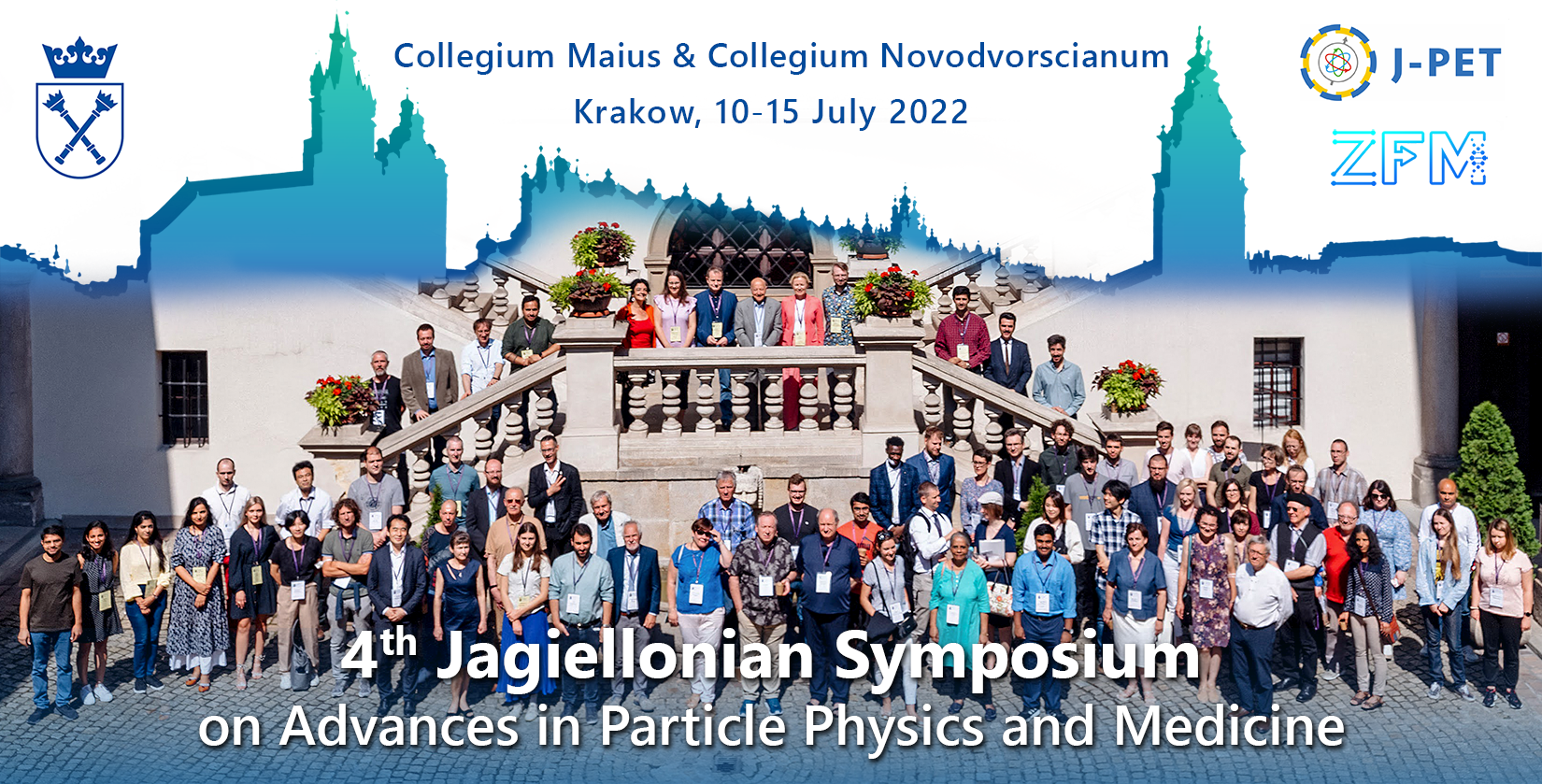Speaker
Description
The utilization of polarization correlations of gamma-rays originating from para-positronium annihilation is emerging as an important additional handle to identify true coincidences in Positron Emission Tomography (PET) showing the potential to improve the signal to noise ratio in this imaging modality [1-3]. It was demonstrated experimentally that the polarization correlations of annihilation quanta could be successfully measured using segmented single-layer scintillator matrices [4]. In that proof-of-concept study we used 4x4 Lutetium Fine Silicate (LFS) scintillator matrices read out by silicon photomultipliers (SiPMs) to reconstruct the Compton scattering of the gammas in a single segmented scintillator layer acting both as the scatterer and as the absorber. In events where both quanta undergo Compton scattering, the difference between their azimuthal scattering angles could be used to deduce the initial relative polarizations, since the two are highly correlated. In a subsequent exploratory study we tested five detector configurations of 64 pixels each of either GaGG:Ce or LYSO:Ce crystals with cross section varying from 1.9×1.9 mm2 to 3.0×3.0 mm2 with the effective pitch of 2.2 mm and 3.2 mm, respectively, aiming to achieve optimal sensitivity to measure polarization correlations of annihilation quanta [5]. At the same time, Geant4 simulations of the investigated configurations were performed in support of the experimental evidence [6]. Polarimetric performance of different module configurations were assessed by reconstructing the Compton azimuthal angle difference of the annihilation gamma pair in measurements with a 22Na point source (≈1 kBq) positioned between modules. The results showed that higher polarimetric modulation factors are achieved by modules with finer segmentation, the highest being, μ=0.34±0.1, for the GaGG crystals of 1.9×1.9×20 mm3 size with 2.2 mm pitch.
The current research focuses on the development and testing of a PET demonstrator (scanner) based on the single-layer polarimeters. The advantage of the single-layer Compton detectors, as opposed to multi-layer configurations, is that their scaling up to large systems does not add complexity or cost, compared to standard PET devices. The demonstrator comprises four large modules with matrices of 16×16 scintillator pixels read out by SiPMs, a pair with 3.2 mm pitch and another with 2.2 mm segmentation pitch. They are placed on radially sliding detector arms enabling choice of the ring diameter from 420 to 700 mm. The mechanical construction also enables precise rotation around the scanner axis to cover the full angular range. The SiPM control and the data acquisition are done by the TOFPET2 system [7]. We will report on the overall performance of the detector modules and the key parameters driving the sensitivity to detect polarized gamma-rays. We will also report on the development of the demonstrator and discuss its potential use with point as well as extended sources keeping gamma-ray polarization as key interest.
References:
1. A. McNamara, et al., Phys. Med. Biol., vol. 59, Nov. 2014, pp. 7587–7600 .
2. M. Toghyani, et al., Phys. Med. Biol., vol. 61, Aug. 2016, pp. 5803–5817.
3. D.P. Watts, et al., Nat. Commun. 12, 2021, 2646.
4. M. Makek, et al., Nucl. Instrum. Methods Phys. Res. A, vol. 958, Apr. 2020, Art. no. 162835.
5. S. Parashari, et al., arXiv:2205.01075.
6. A.M. Kožuljević et. al., Condensed Matter 2021, 6, 43.
7. A.D. Francesco et al., J. Instr., 2016, 11, Art. no. C03042.

